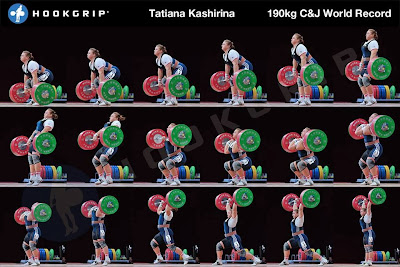All is not lost, because you can get a decent workout in in a really short amount of time. I'm not going to blow sunshine up your butt and tell you that you're going to get totally shredded and sexy with 30 minute workouts because that would make me an ass, and I'm not an ass. Usually.
Doing a few quick workouts during a really busy week won't help you get amazing gains in fitness or strength, but it will certainly help attenuate the loss of those attributes during a busy time in your life. Depending on your goals, there are two ways you can go about putting together a workout like this for yourself, but they both revolve around the same principle. I've spoken often about Dan John and his 5 basic human movements. These movements, while not the Holy Grail of training, will provide a great basic template for anything you need to do.
Conditioning
Take an exercise from each category (squat, push, hinge, pull, carry) and do them in rapid succession. It's not brain science, truthfully.
A1) Goblet Squats x10
A2) Pushups x10
A3) KB Swings x15
A4) Chinups x10
A5) Farmers Walk x25yds
Repeat as many times as necessary within your allotted time frame. Again, you're not going to break any huge plateaus doing this, but it's better than not training. Using some challenging weights is going to bust your lungs much quicker than you'd expect. With the numbers of exercises available in each category, you can do this style of workout multiple times a week without overlapping exercises too often.
Strength
Again, this isn't a template that's going to get you prepped for a powerlifting meet. Nor is it a replacement for traditional strength training. But if you are short on time and still want to train, there is an effective way to do it. If you had two (non-consecutive) days a week to train and you wanted to go heavy, you could set it up like this:
Day 1:
A1) Squat: 6x3
A2) DB Row: 6x10/
A3) Farmers Walk 6x25yds
Day 2:
A1) Deadlift: 6x3
A2) Incline DB Press: 6x8
A3) Sandbag Zercher Carry: 6x25yds
Boom. Call it a week. Recover and worry about the other stuff going on in your life; just make sure to get back to a real program at the next available opportunity. Just like the conditioning program, the number of exercises you can rotate into those to fit your needs is nearly limitless. Dan John actually wrote about making some great gains in his own training while doing a really simplified 2x/week program.
If you find yourself in a pinch, give something like this a shot. Have fun with it and don't let training become a stress in your life; I'm sure you have enough anyway.
Have a great day and go lift some heavy shit!















































